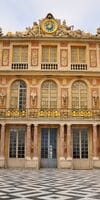Versailles (Palace of Versailles, French name: Château de Versailles) is a palace and park ensemble in France, which was the residence of the French kings, and is now a museum complex included in the UNESCO World Heritage List.
The Versailles Ensemble is located in the eponymous city of Versailles, 17 kilometers southwest of the center of Paris.
The history of the Versailles palace and park ensemble began with Louis XIII, who built a simple hunting lodge in 1623. The hunting lodge was transformed and expanded by his son Louis XIV, who in 1682 moved his royal residence and government from the Louvre Palace (now the Louvre Art Museum) and Vincennes Castle to Versailles, making the palace the de facto capital of France.
Before the French Revolution, kings succeeded each other, and each in turn decorated, expanded and made internal alterations of the Palace of Versailles, until the palace turned into a beautiful three-dimensional royal residence.
During the history of the Versailles complex, many outstanding French artists have worked on it: architects, sculptors and painters.
In 1789, the French Revolution forced Louis XVI to leave Versailles and returned to Paris. After that, the Palace of Versailles was no longer a royal residence. Napoleon Bonaparte used Versailles as a summer residence from 1810 to 1814. In 1837, the complex of the Palace of Versailles was restored and turned into a Museum of the History of France, by the will of King Louis Philippe, who ascended the throne in 1830.
Today, the palace and park ensemble of Versailles is an outstanding monument of the era of the "grand style", the "golden age" of French art of the second half of the 17th century, as well as a center of tourism of world importance, which makes it one of the most significant and visited attractions in the world.
The Versailles Palace and Park Ensemble is a complex consisting of: the Palace of Versailles itself, an adjacent garden with ponds, fountains and sculptures, as well as the Trianon estate. Fountain shows are held in the gardens of the palace. Each of the objects of the palace ensemble can be visited by purchasing separate tickets or a complex one; tickets must also be purchased for the fountain show. Read more about tickets to Versailles at the end of this article.
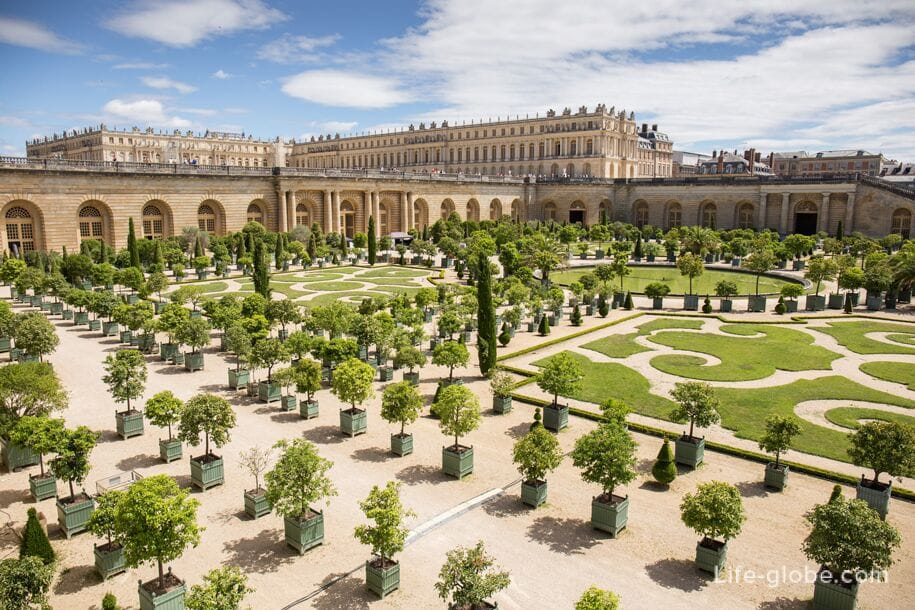
Palace of Versailles
The main access to the palace complex and the palace itself is through the Gate of Honor or the Gate of Honor (Grille d'honneur), on the north side of which is the sculpture group "Victory over the Empire" by Gaspard Marcy, and on the south - the sculpture group "Victory over Spain" by Francois Girardon.
Behind the Gate of Honor is the Court of Honor (Courdoner, Cour d'honneur), from which you can access the wings of ministers, the entrances to the palace and the entrance to the gardens.
Behind the Court of Honor there is a Royal Gate, behind which guests are greeted by the Royal Court (Cour Royale), which can only be accessed by tickets to the palace.

In the Palace of Versailles (French "Chateau") you can visit:
- Marble courtyard;
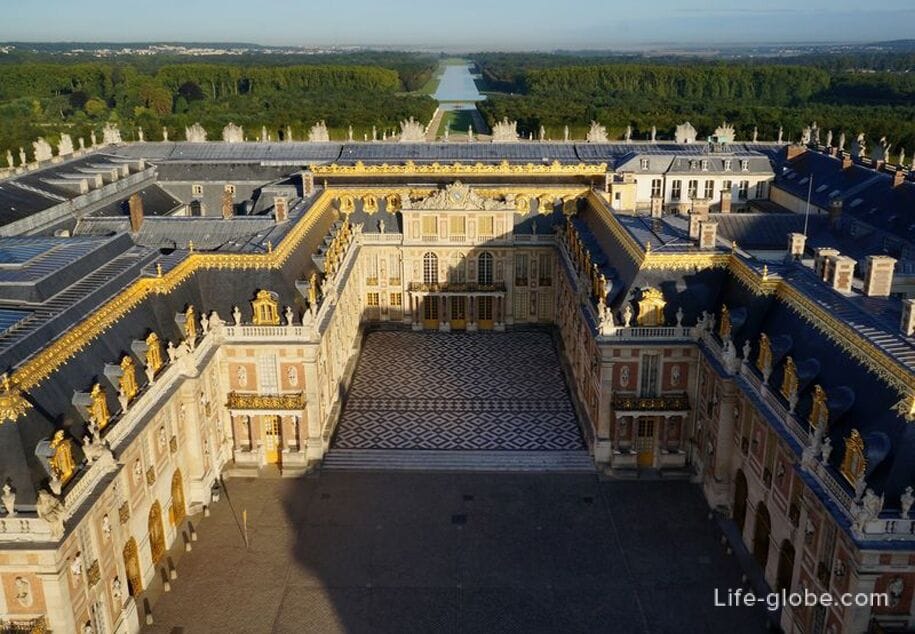
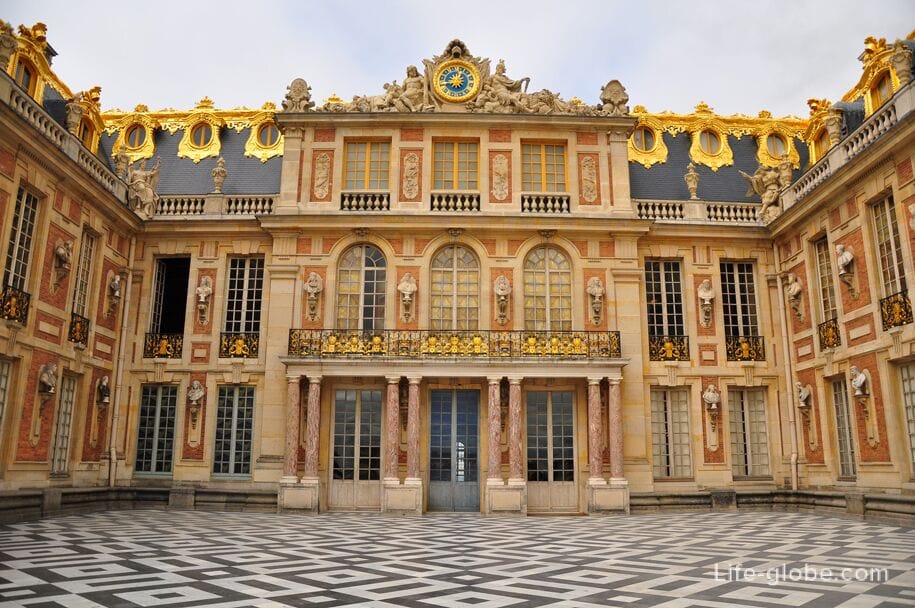
- The Mirror Gallery (Galerie des Glaces), where concerts are organized today. This large hall occupies the interior of the second floor along the entire facade of the central building from the garden side and is one of the most impressive rooms of the Palace of Versailles;
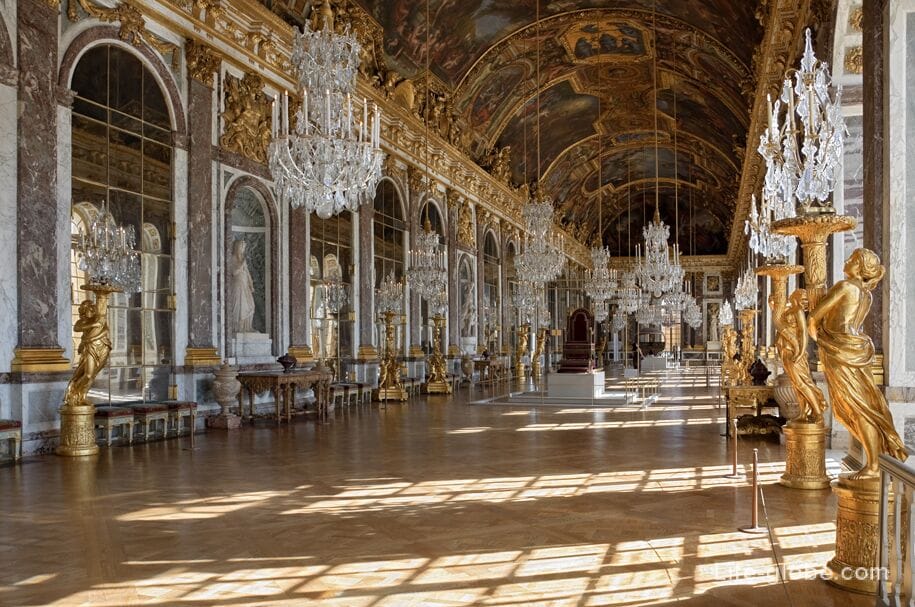
- royal apartments (queen and king) with bedrooms, dining rooms, game rooms, offices, libraries, separate rooms for personal use and for security;
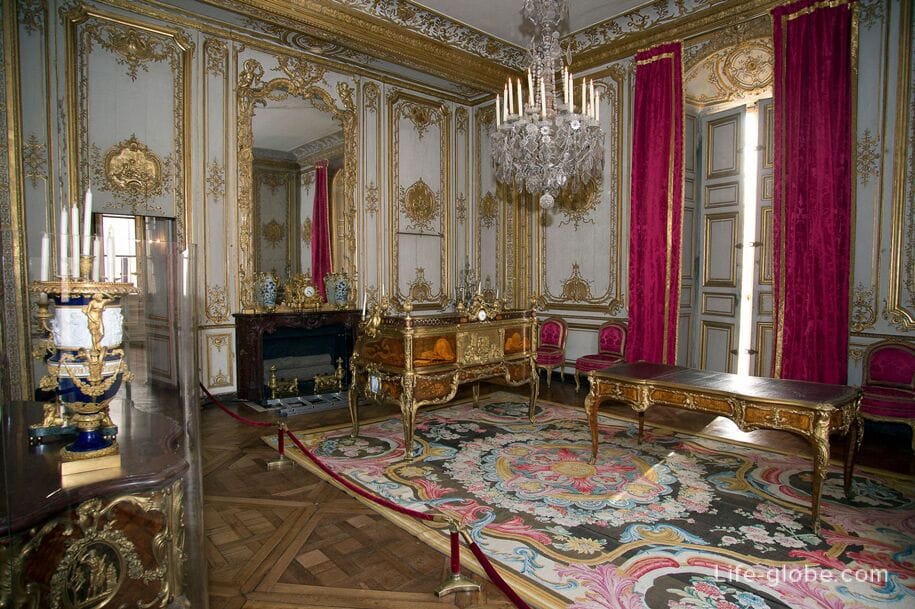

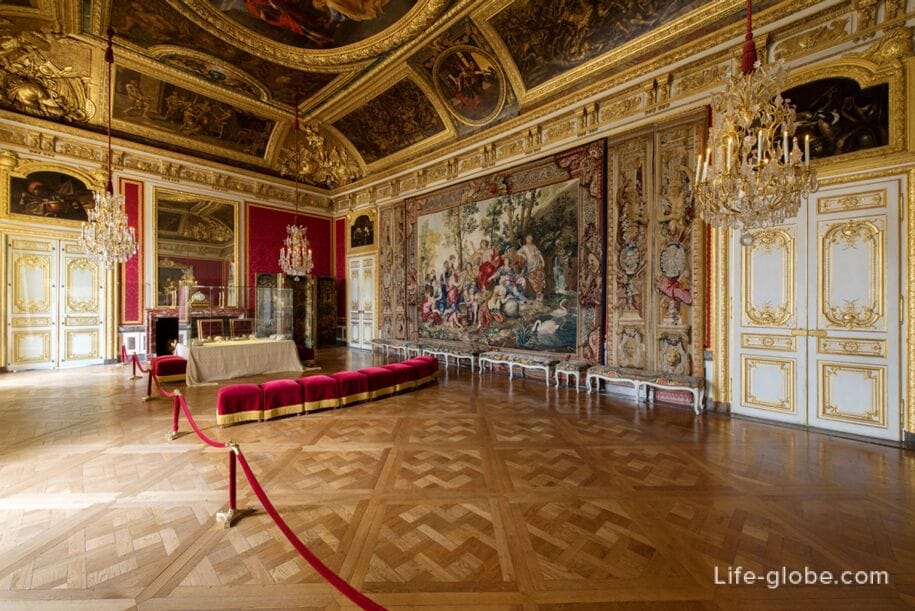
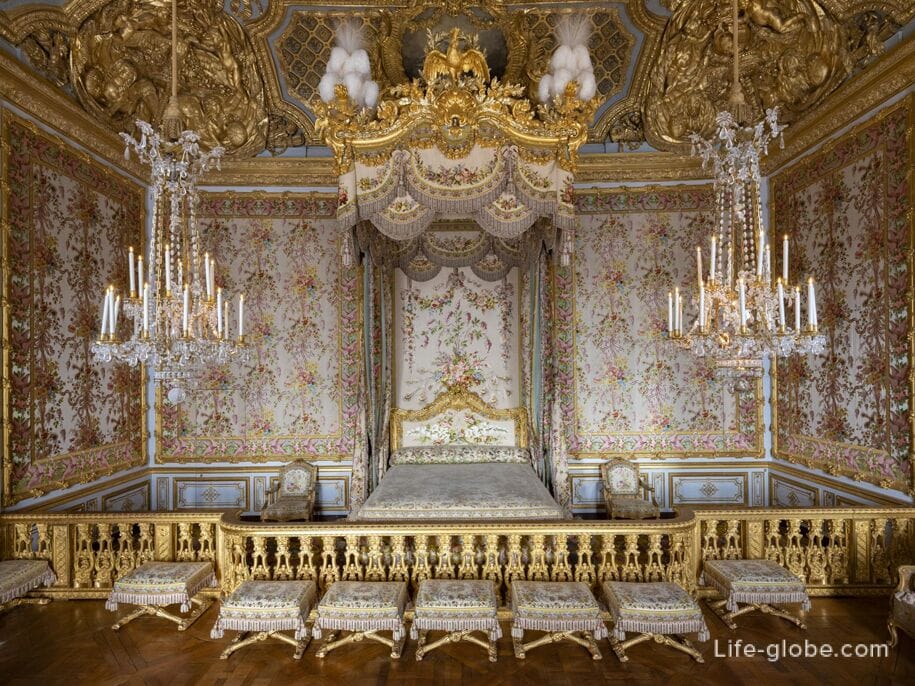
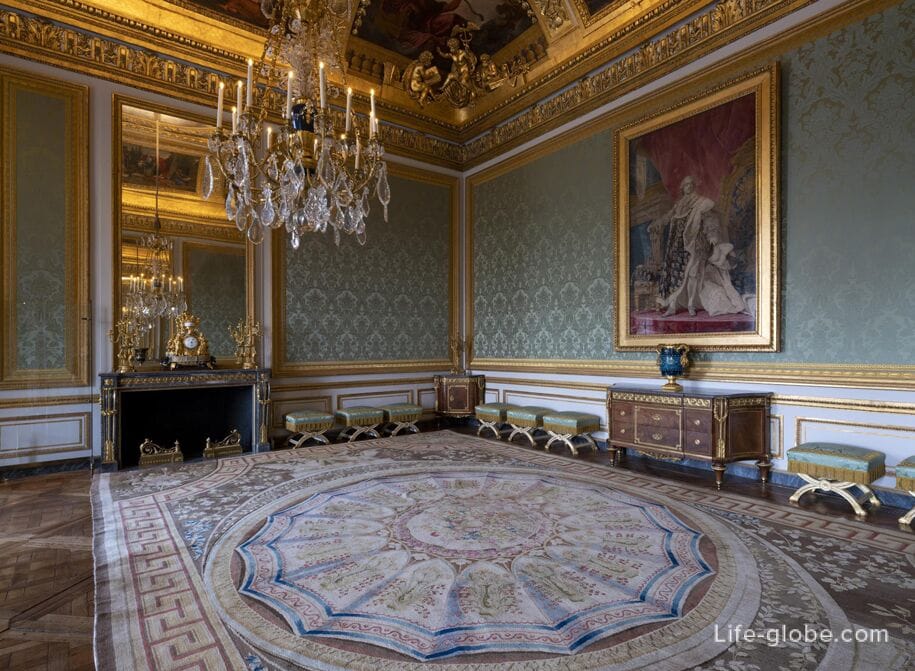
- rooms of Louis XIV;
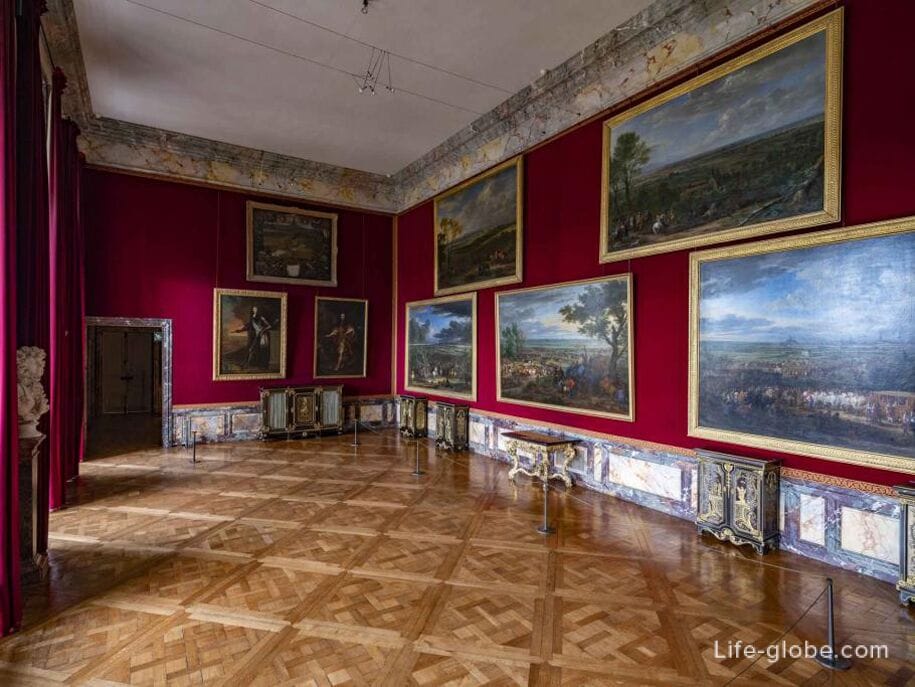
- apartments of the daughters of Louis XV;
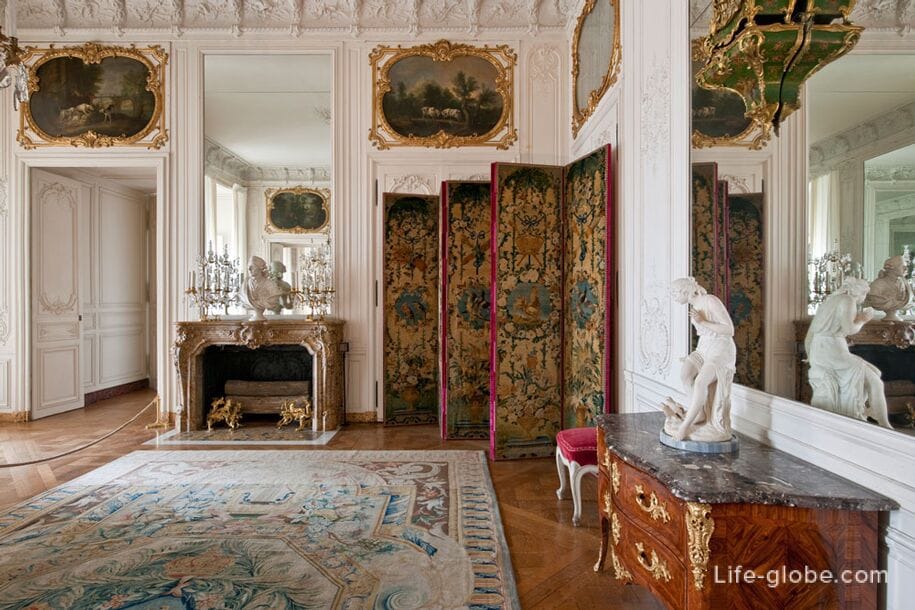
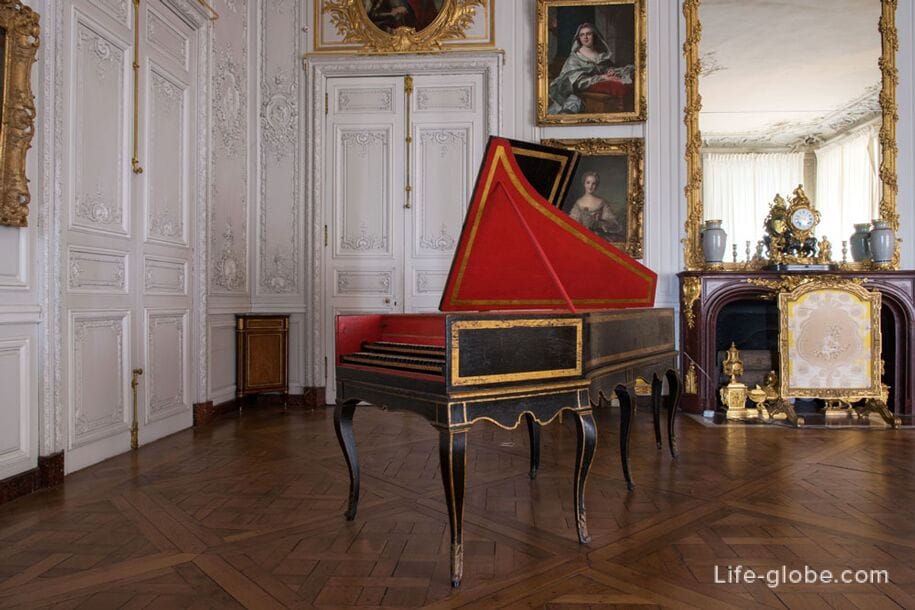
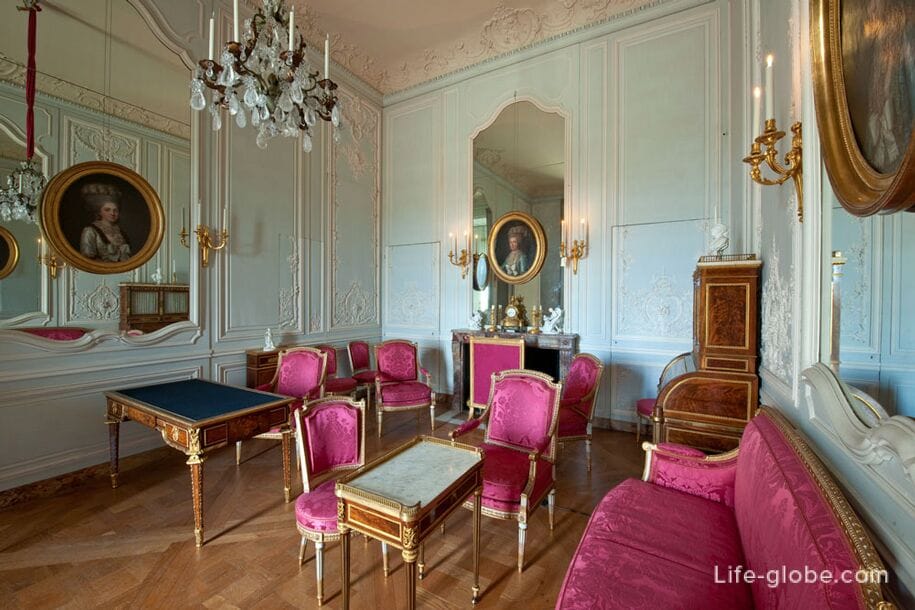
- apartments intended for members of the royal family and some important royal favorites (for example, Madame de Pampadour and Madame Du Barry);
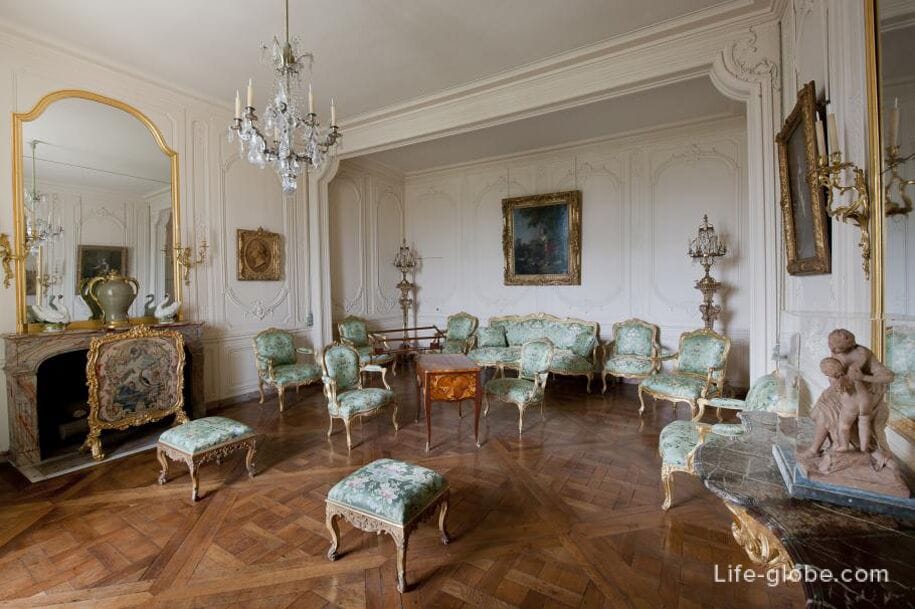


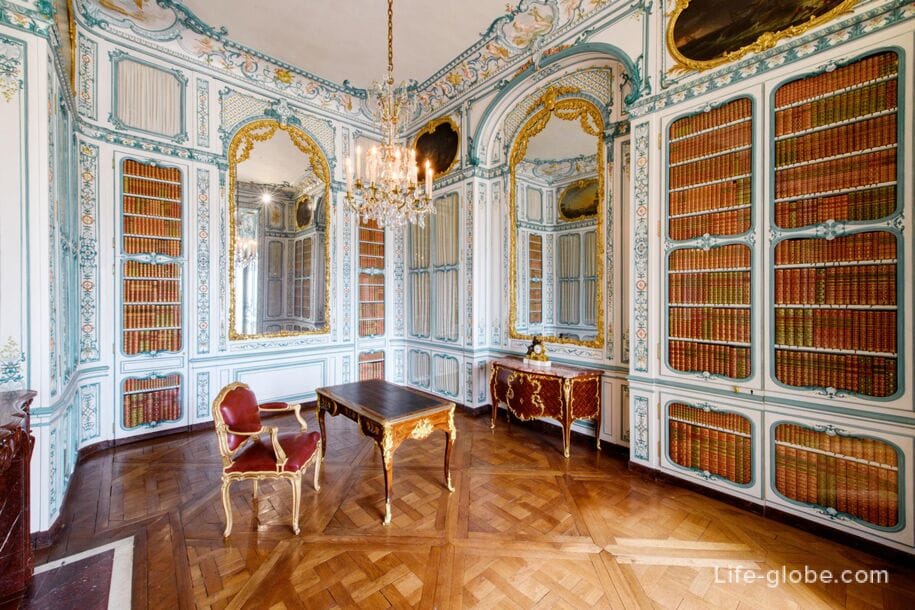
- The Great Hall and Halls of the Crusades, which showcases the history of the eight major crusades between the end of the 11th and the end of the 13th centuries, as well as the main episodes in the history of the Knights of Saint Jean de Jerusalem since their departure from the Holy Land in at the end of the 13th century and before their arrangement on the island of Malta in the 16th century. Paintings by French artists are exhibited in the halls;
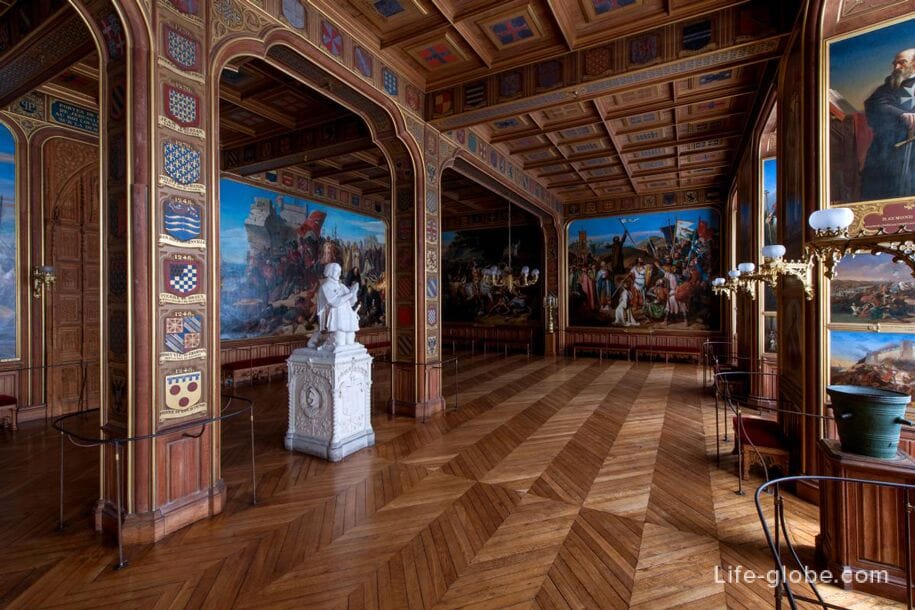
- halls of the Empire, where paintings telling about the Napoleonic history are accompanied by a collection of furniture and works of art from the Empire period from imperial residences that have not survived to this day: Tuileries Palace in Paris and Le château de Saint-Cloud;

- The Gallery of Battles, where 35 paintings and 82 busts are presented, illustrating almost fifteen centuries of French military success, from Clovis to Napoleon. This is the largest room of the palace, which occupies almost the entire first floor of the southern wing;

- Hall of the Sacred. The second chapel of the castle (1672-1682), then the large guard room "shared by the king and queen" (1682-1789), this large room preceding the chambers of the sovereigns, became in 1833 a room dedicated to the glory of Napoleon Bonaparte. The hall is decorated with portrait paintings, and in the center of the hall is the Column of the German campaign, also called the "Austerlitz Column", commissioned by Napoleon to the Sevres Factory to commemorate his first imperial victories. Completed in 1807 and placed the following year in the state rooms of the Tuileries Palace, the column is one of the greatest masterpieces of Sevres porcelain production during the Empire;

- the room of 1792 is the only surviving room of the Louis Philippe Museum dedicated to the French Revolution, which gives an understanding of the historical and political project of the King of France;

- rooms in Africa, Crimea and Italy with paintings from the history of the new reign. Today the halls of Africa rooms are used for large temporary exhibitions of Versailles;
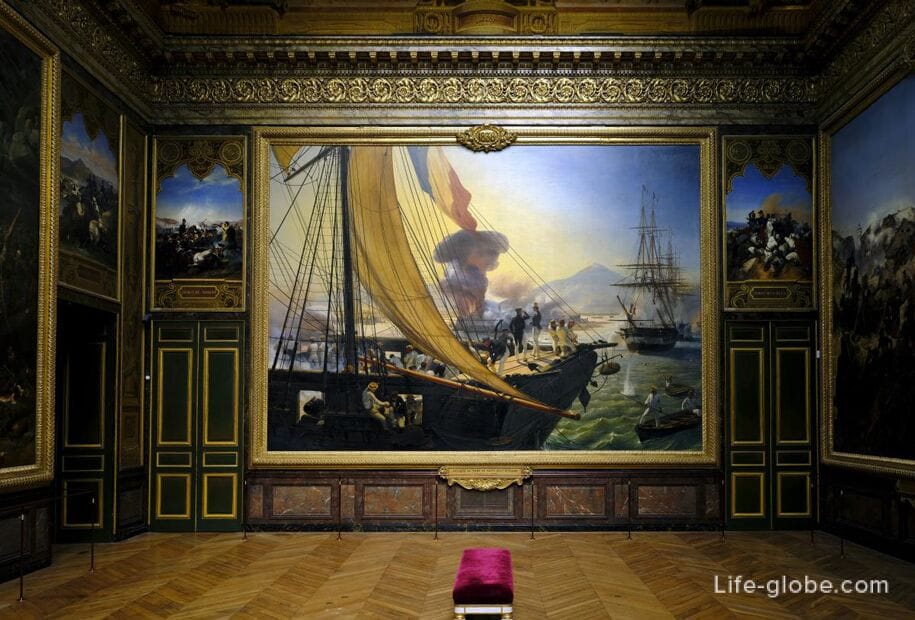
- the gallery of the history of the Palace of Versailles, now located in the former princely apartments and where the history of Versailles is told: from the hunting lodge of Louis XIII to today's palace museum. Paintings, reproductions of old prints, as well as models complete the tour of this gallery of 11 rooms;
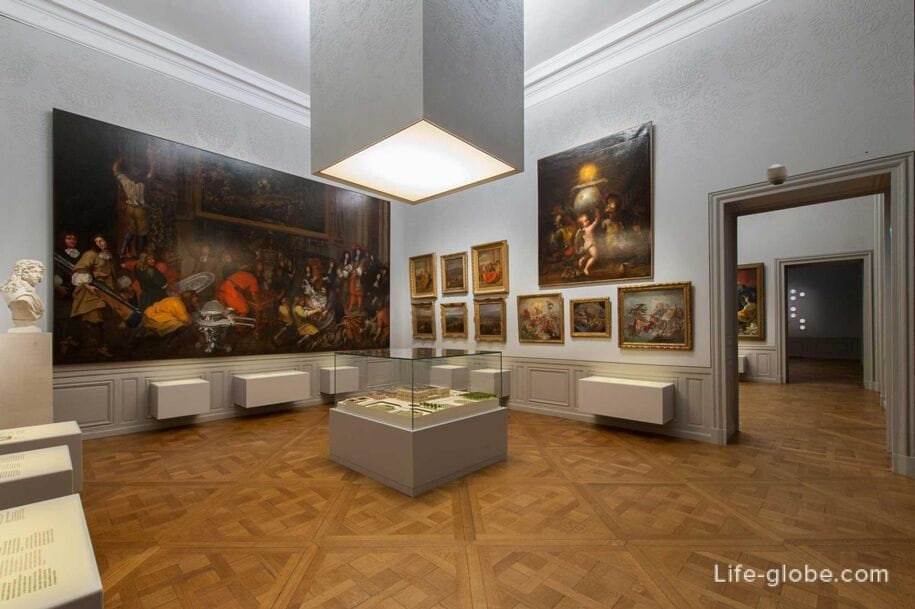
- the royal chapel Versailles (Chapelle du château de Versailles) and the Royal Opera House.
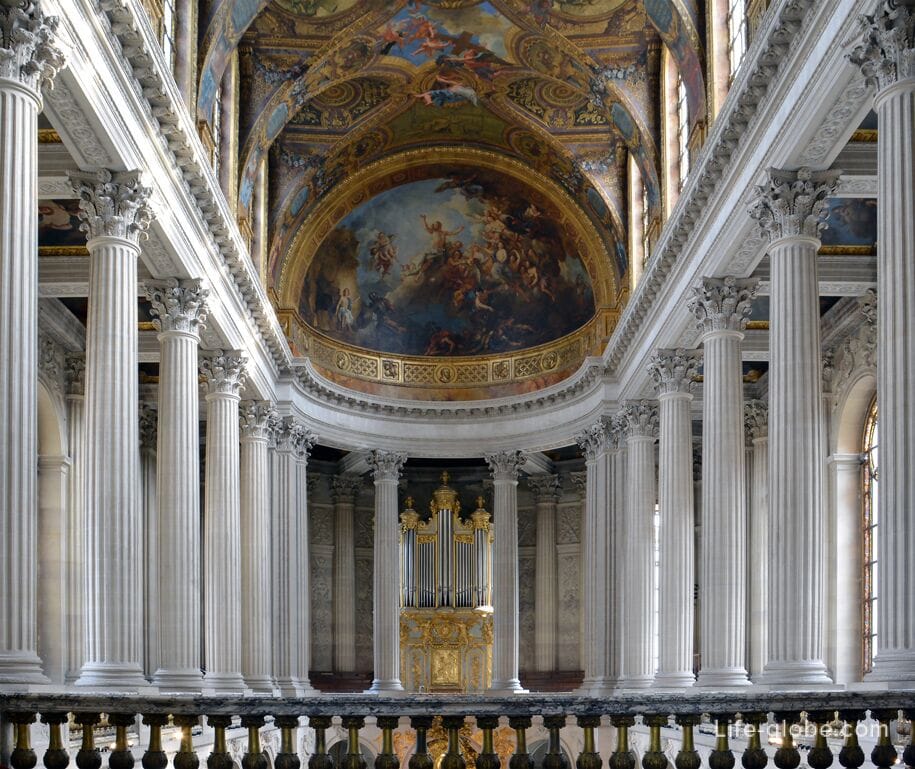
Attention! Some of the rooms of the palace are accessible only with excursions; also, some of the halls may be closed for renovation.
Garden and Park of the Palace of Versailles
Just behind the Palace of Versailles are the beautiful palace gardens of Versailles - a regular park. Entrance to the gardens of Versailles is paid.
These regular gardens with parterres, terraces, reservoirs, many fountains, sculptures, greenhouses, flower beds, groves, alleys and places to relax are truly the pearl of French landscape art.
There are also several small palace-like structures in the Versailles Garden, for example, the Small Trianon, the Grand Trianon, the French Pavilion (salon for games) and the like.
The fountains of the Versailles Garden are open in the warm season (from April to October). Tickets must be purchased for the Musical Fountain Show and Fountain Night.
In the warmer months, you can take a boat ride along the Grand Canal of the Garden.
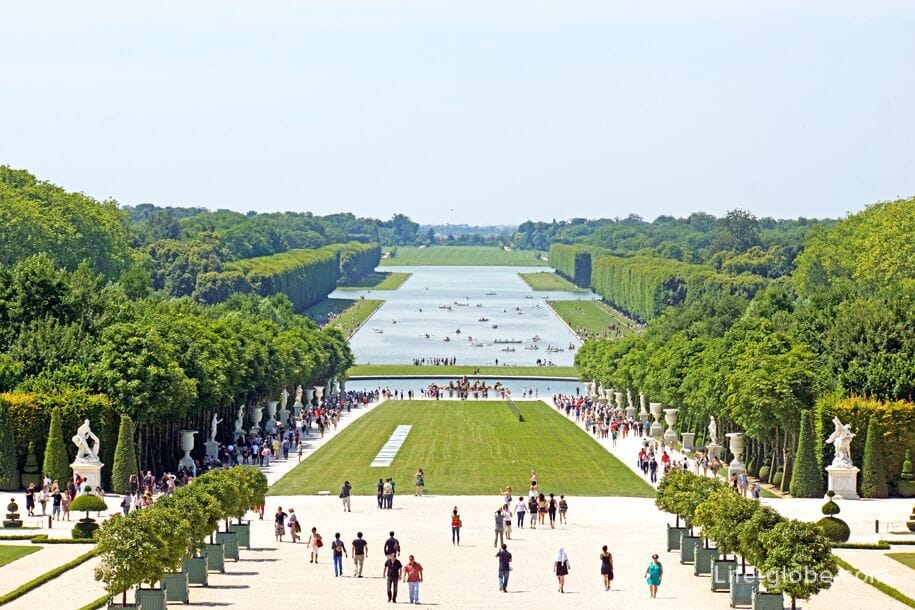
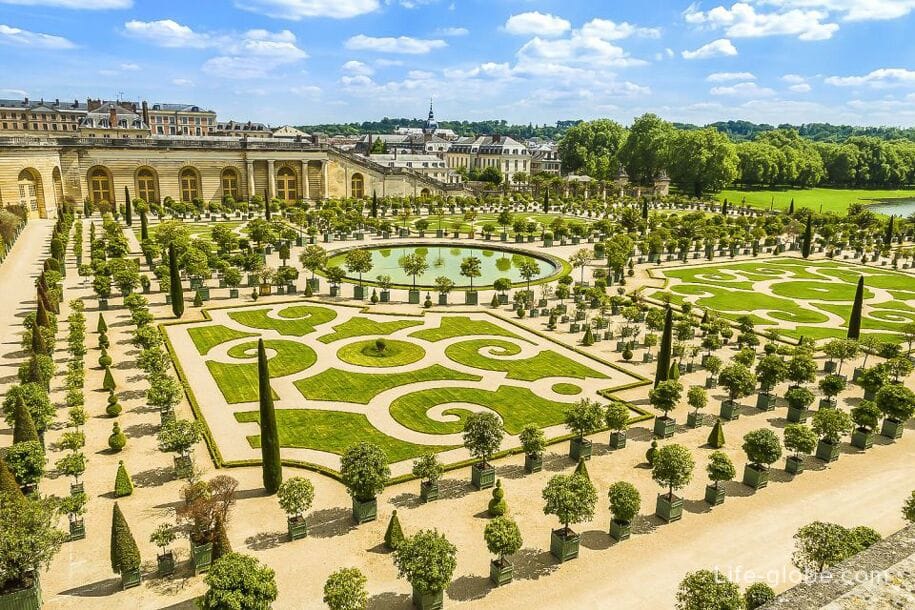
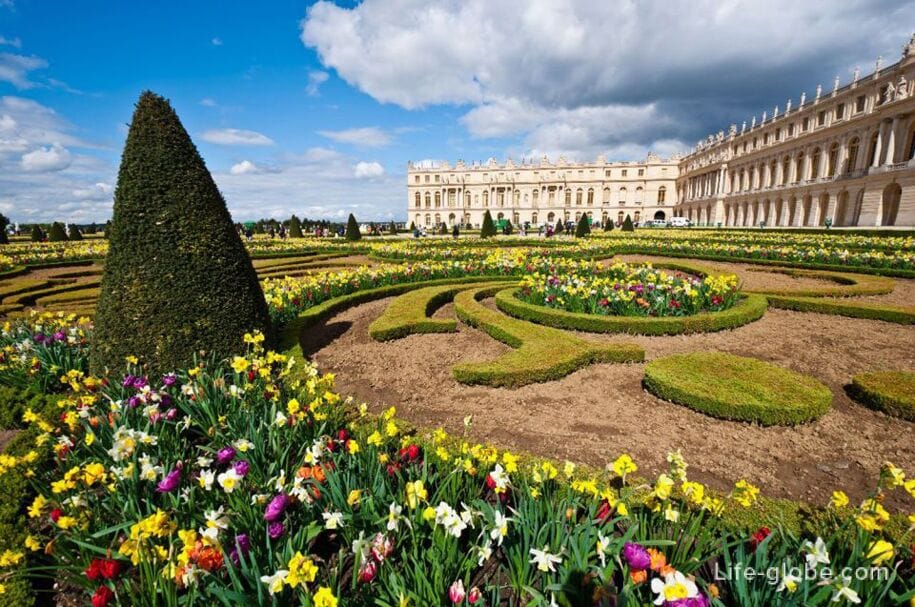
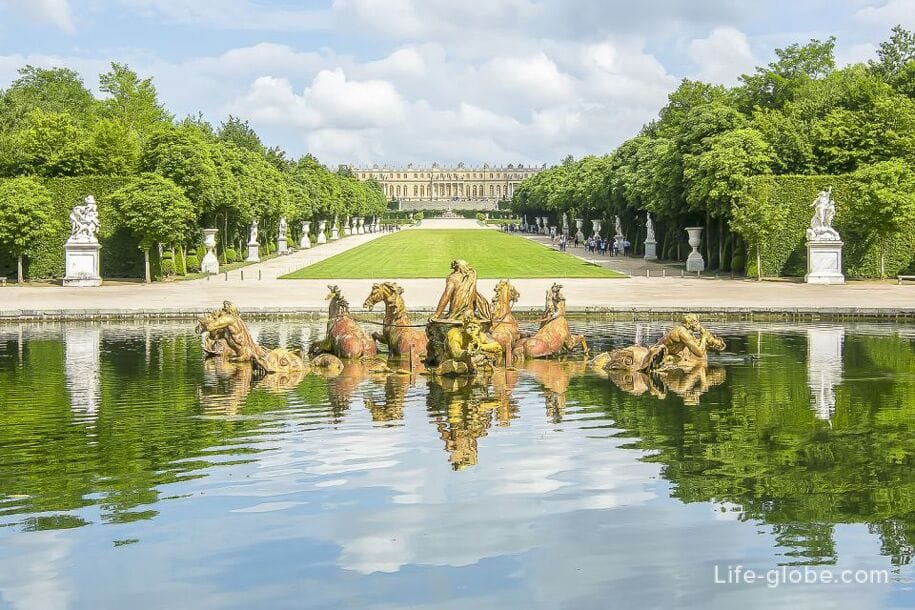


One of the most famous works in the garden of Versailles is the Latona Basin (Bassin De Latone) with a marble group created by the Marcy brothers in 1670 and depicting Latona and her children.
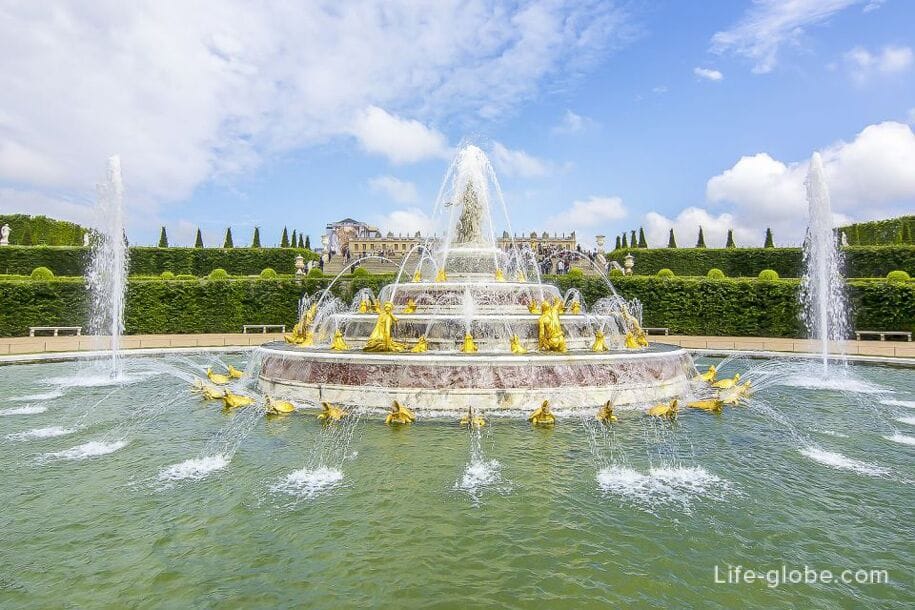
Beyond the gardens of Versailles stretchesThe Versailles Park, which naturally unites them thanks, in particular, to two large reservoirs: the Grand Canal and the Swiss Watercourse.
Paved with straight trails that delimit woodlands and cultivated fields, the park covers an area of about 800 hectares.
Access to the park for pedestrians and cyclists is free.

Remark. Even Tsar-Emperor Peter I was so delighted with Versailles and its gardens that he wanted to compete with the luxury of the palace ensemble and built his Peterhof palace and park ensemble (St. Petersburg, Russia), which today is a museum with a palace, a garden and a park with small palace pavilions. Learn more about Peterhof...
The Trianon Estate of the Palace of Versailles
The Trianon Estate (domaine de Trianon) is located within the gardens of the Versailles Palace complex and consists of a Large or Marble Trianon, a Small Trianon, the Queen's Village and their adjacent gardens.
Not far from the Palace of Versailles, Louis XIV gave free rein to his love of architecture and gardens, creating an area reserved for personal use. Then Louis XV and Queen Marie Antoinette, in turn, contributed to the development and decoration of the Trianon. The Queen ordered a garden to be laid out in the complex in a fashionable landscape style and to complement the area with a village around the lake.

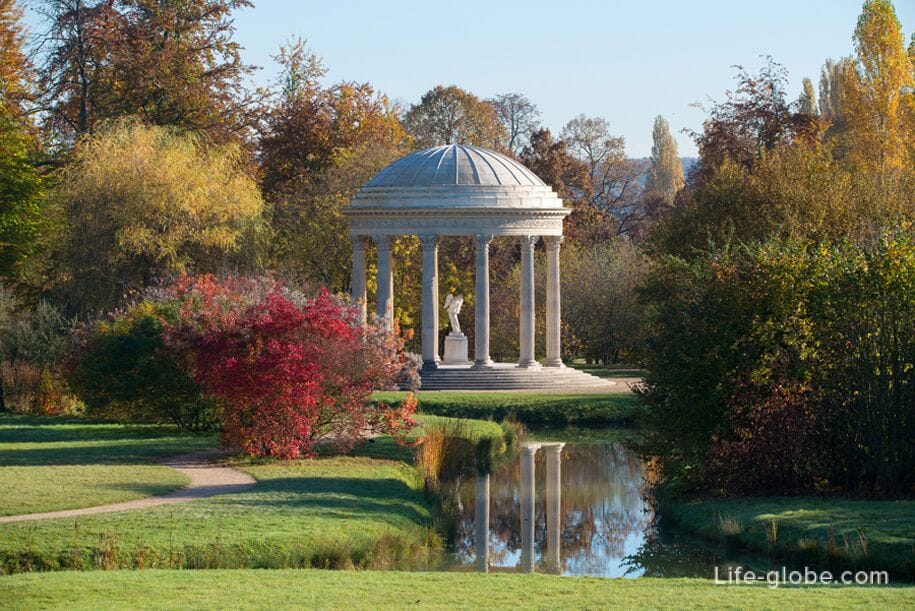
The most outstanding building with rooms that can be visited isThe Grand Trianon, which is a small palace made of pink marble and porphyry with delightful gardens surrounding it.
Temporary exhibitions are also held in the Grand Trianon.



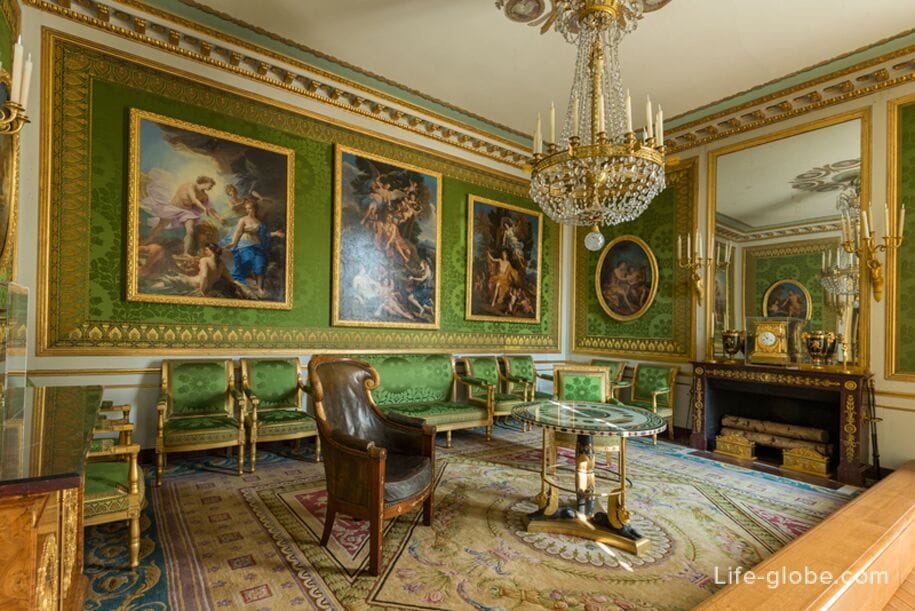

The Small Trianon with auxiliary buildings and a French garden was created by decree of Louis XV in neoclassical architecture and is an excellent example of the fashion for the "Greek style", which was then spreading in Europe.
The Small Trianon also houses halls and visiting rooms.
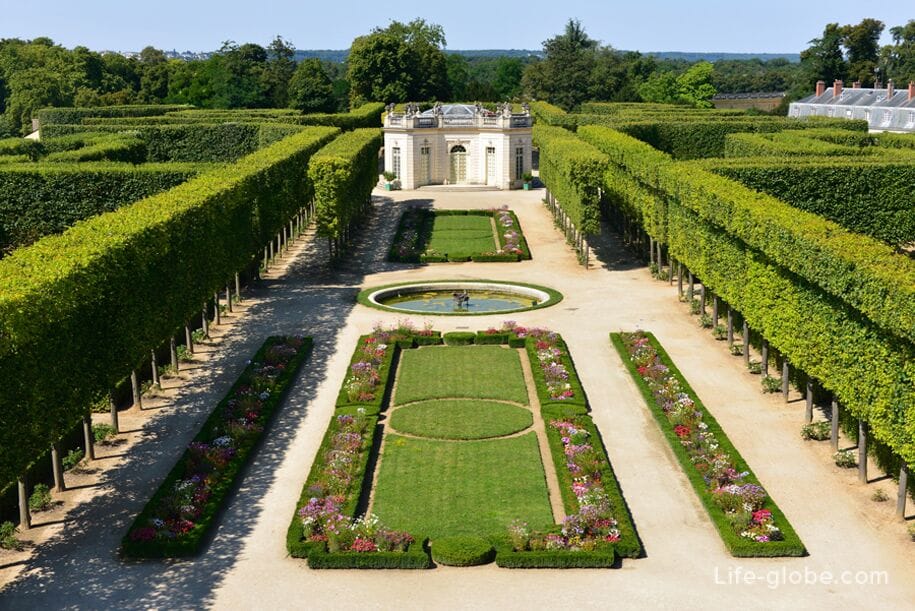
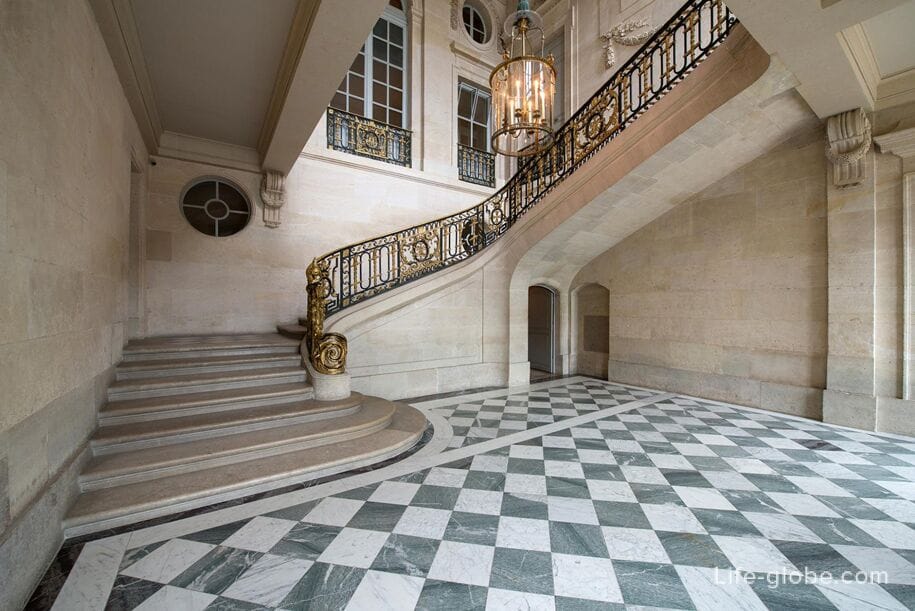
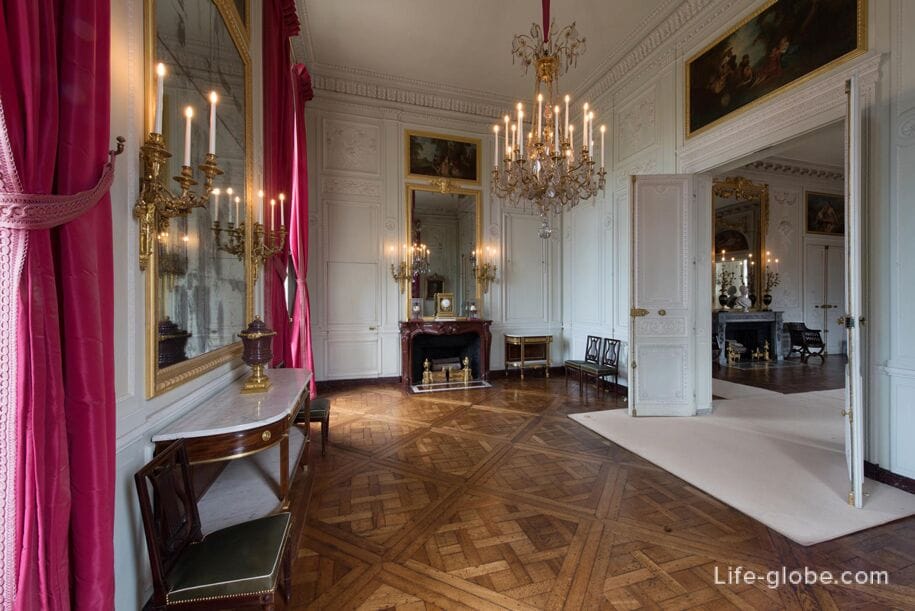


The village of Koroleva has rural features of buildings, is divided around a large lake and consists of a mixture of various rustic architectures, but at the same time creates an undeniable unity with the surrounding architecture.
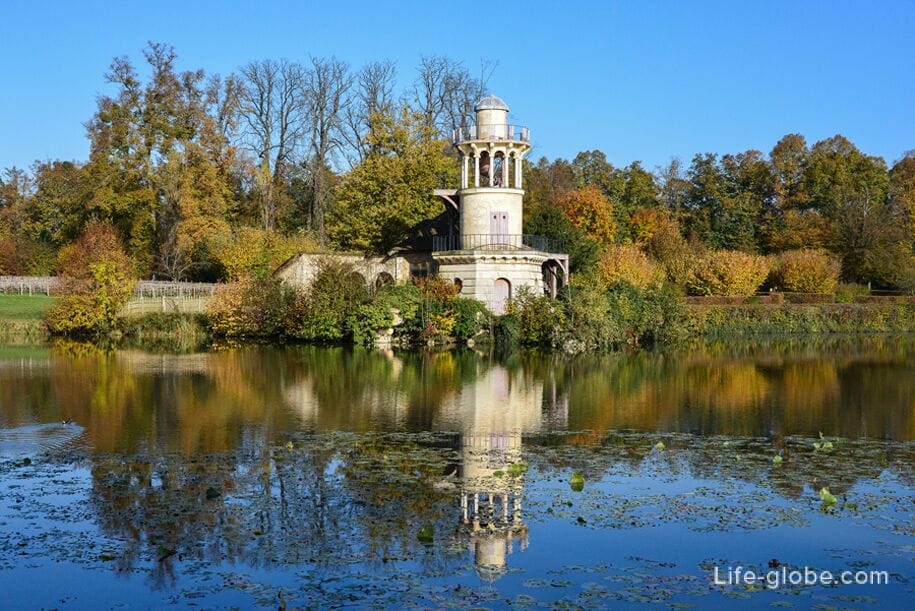
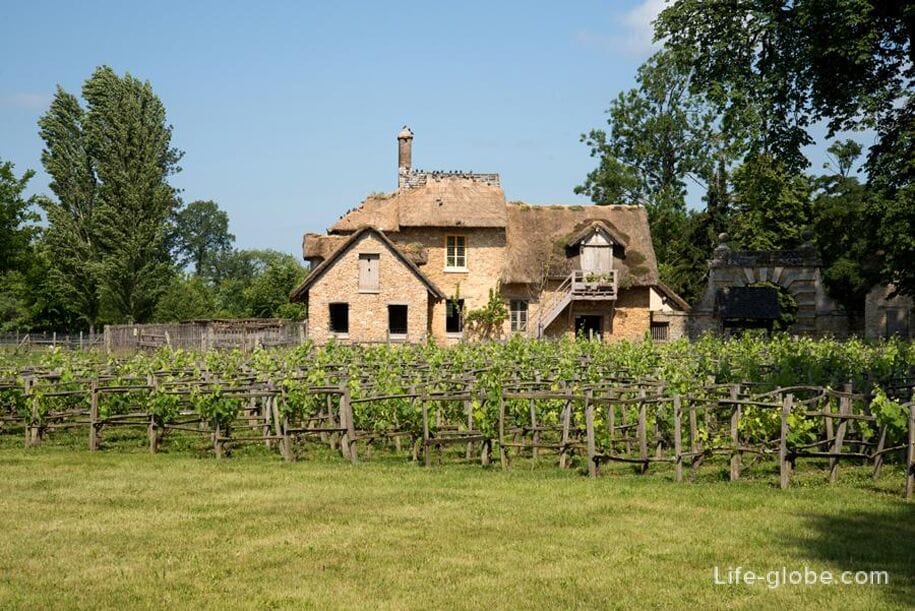
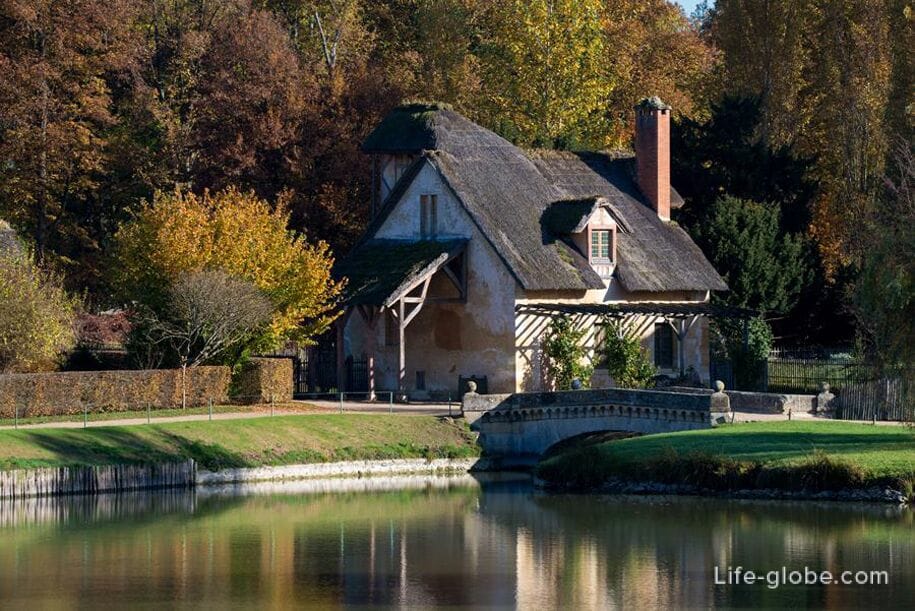
You can visit the complex of the Trianon estate with temporary exhibitions both on separate tickets and complex with the entire ensemble of Versailles.
Versailles outside the Palace and Park complex
Outside the Palace and park ensemble of Versailles there are:
- Carriage Gallery (La galerie des Carrosses) with a large area for the accommodation of former royal horses, a collection of antique horse carriages, chairs and sleighs. Address: 1 Av. Rockefeller, 78000 Versailles, France. Admission is free;
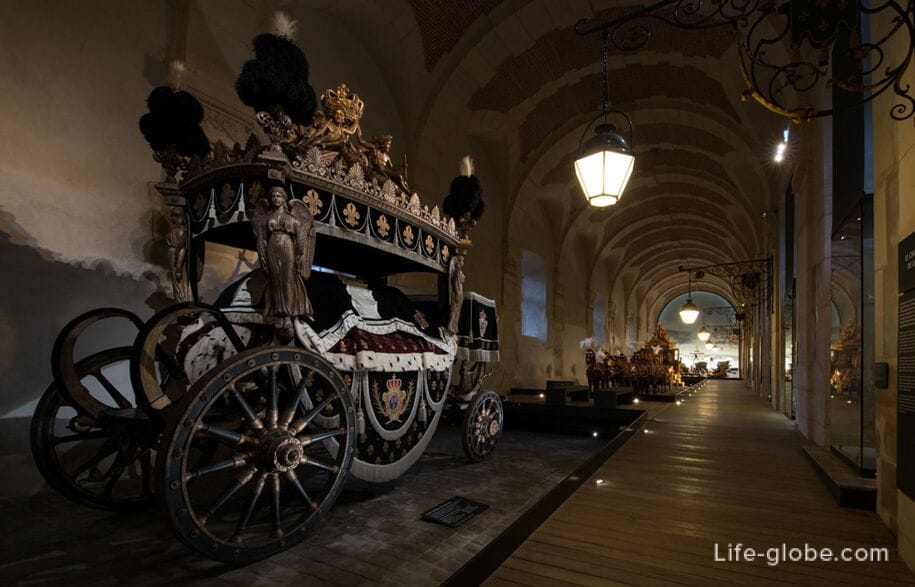
- A sculpture and stucco gallery featuring replicas of ancient Greek and Roman statues, as well as original sculptures from the gardens of the Palace of Versailles. The gallery is located in historic buildings that were built to house court horses and carriages by Jules Ardouin-Mansard between 1679 and 1682, at the same time as the carriage house. Address: Av. Rockefeller, 78000 Versailles, France. Admission is free;

- Marly Park (Le Domaine de Marly), located 7 kilometers northwest of Versailles, halfway to the Chateau de Saint-Germain-en-Laye (Chateau de Saint-Germain-en-Laye) and is another major achievement of Louis XIV, who created the palace and the park as his personal residence and restricted access to them to only a few carefully selected courtiers. Marley Castle was destroyed in the early 19th century, but today there is a park with ponds and statues. Entrance to the park is free;

- Campus Versailles, dedicated to crafts and heritage;
- The National Equestrian Academy of the Versailles estate (Academie equestrie nationale du domaine de Versailles), where horse shows and excursions are held.
Practical information
There are various tickets to the Versailles Palace and Park complex, for example:
- a comprehensive ticket giving the right to visit all the objects of the Versailles complex: the palace, the Trianon estate, temporary exhibitions and the garden
- a ticket to the palace, giving the right to visit the palace, temporary exhibitions in the palace and the garden - except for the days of the musical fountain and musical gardens show
- ticket to the Trianon estate, giving the right to visit the estate, temporary exhibitions in the estate and the garden, - except for the days of the musical fountain and musical gardens show
- ticket to the musical fountain show in the palace gardens
- ticket to the fountain night show in the palace gardens
- ticket to musical gardens
- ticket for 2 days + horse show, giving the right to visit all the objects of the Versailles complex: the palace, the Trianon estate, temporary exhibitions, a garden with a show of musical fountains and musical gardens + a show of the Versailles Riding Academy.
Persons under the age of 18 enter the Palace of Versailles complex - free of charge; admission is also free for people under the age of 26 if they are residents of the European Union.
Tickets can be purchased at the ticket offices near the palace, online on the website of the Palace of Versailles or on the partner website
Excursions to Versailles
You can visit the palace and park ensemble of Versailles with excursions from Paris
How to get to Versailles from Paris
You can get to Versailles from Paris by taxi, rented car, high-speed train line C (yellow) or SNCF trains - the destination is near the Versailles Chateau Rive Gauche Palace, from the Eiffel Tower by Versailles Express shuttle buses, by public bus No. 171. Flights to Paris →
Rent a car in Paris (all places, including airports) →
Intercity and international buses to Paris and Versailles →
Trains / commuter trains to Paris and Versailles →
Where to stay in Versailles
If you want to devote a few days to Versailles, then in the city of Versailles itself (near the palace and Versailles Park) you can stop
The 5-star Waldorf Astoria Versailles - Trianon Palace Hotel is located on a green area of 3.2 hectares, next to the park of the Palace of Versailles.
The hotel has restaurants, a bar, free Wi-Fi, a free spa center with a swimming pool, hammam, sauna and fitness center.
It offers rooms and suites in the historic Palace building or the modern Pavilion building. The rooms are equipped with a flat-screen TV with satellite channels, an iPod docking station, a fireplace, a balcony, a minibar, a safe, air conditioning, a coffee machine/kettle, tea/coffee making facilities, bathrobes, slippers, a hairdryer and free toiletries.
The room rate can include: breakfast or breakfast + dinner. Link to the hotel
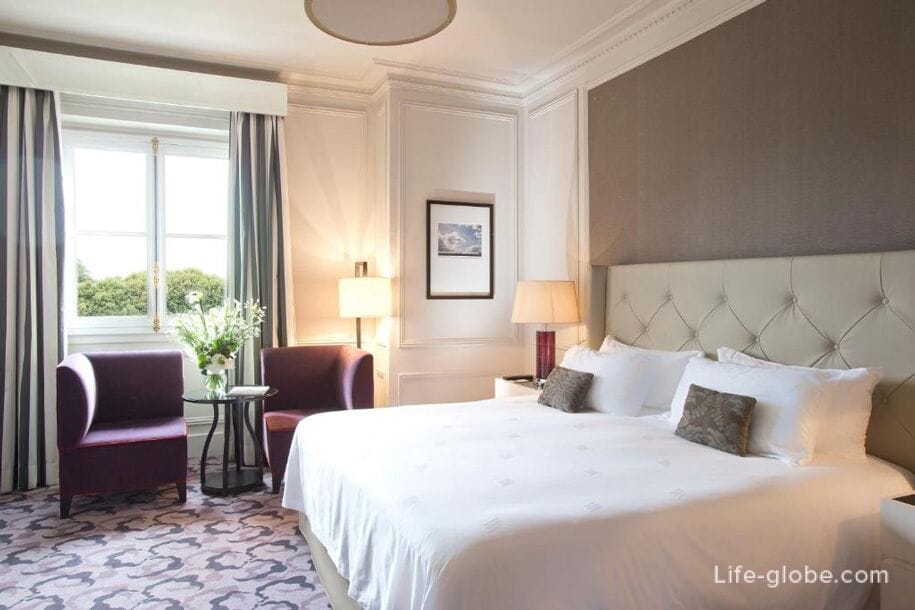
4-star Hotel Le Louis Versailles Château - Mgallery with a terrace, lounge bar, restaurant, free Wi-Fi, fitness center with cardio equipment, hammam and sauna, parking, rooms and suites.
The rooms are equipped with air conditioning, a flat-screen TV, a safe, a minibar, a coffee machine/kettle, bathrobes, slippers, a hairdryer and free toiletries.
The room rate can include: breakfast or breakfast + dinner. Link to the hotel
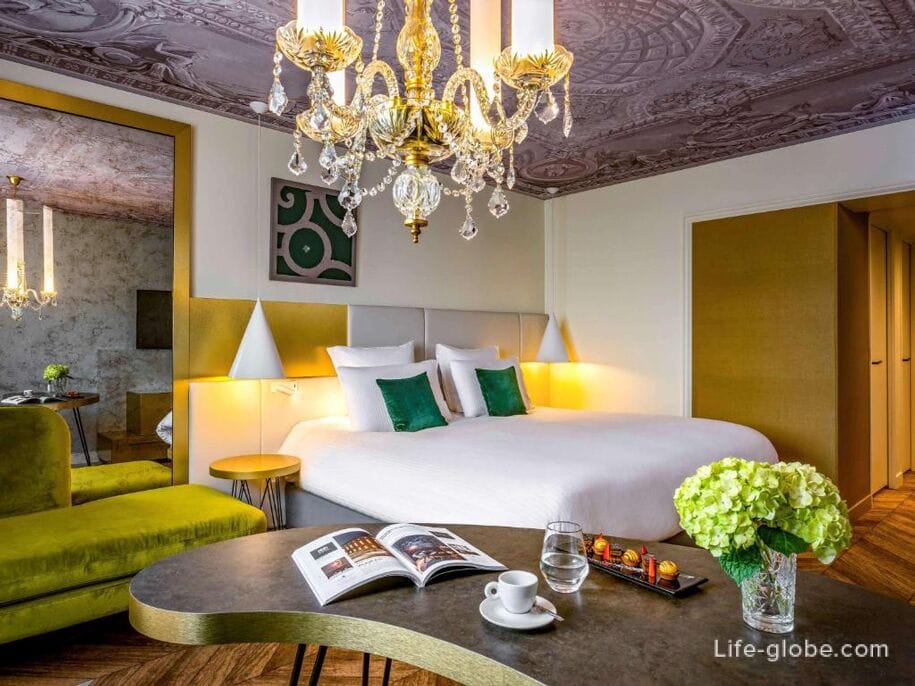
The 4-star Hotel Le Versailles offers a terrace, a bar, free Wi-Fi and parking.
The hotel has large family rooms and rooms suitable for disabled guests. The rooms are equipped with a work desk, air conditioning, a flat-screen TV, a safe, a shower or a bath, and a hairdryer.
A buffet breakfast can be included in the room rate. Link to the hotel

VERSAILLES HOME PALACE Apartments with garden views, free Wi-Fi and parking, located in a historic 18th-century building.
The apartment features a patio, a fully equipped kitchen with a dishwasher, a fireplace, a seating area with a sofa, a flat-screen TV, a washing machine and a private bathroom with a shower and a hairdryer. A microwave, a fridge, an oven, a kettle and a coffee machine are also provided. Link to the apartment

All accommodation facilities in Versailles can be viewed and booked here
All accommodation facilities in Paris, including in the city center and more remotely from it, can be viewed and booked here




